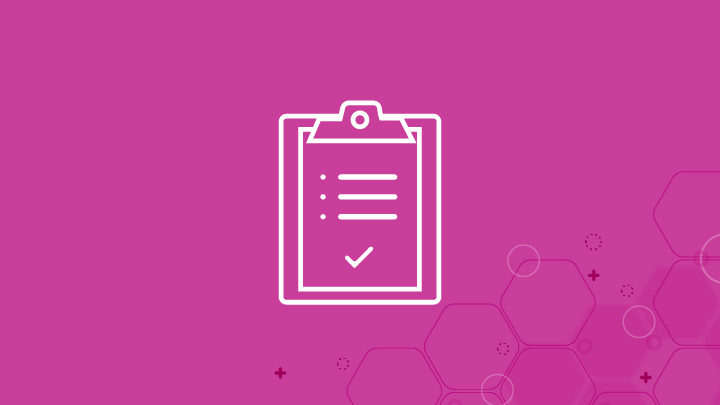Do you want to provide students with opportunities to identify their strengths and weaknesses through self-assessments?
Do you want students to analyze and demonstrate how they think and what they understand?
Do you want students to take ownership of their learning and growth?
Do you want to create an environment where reflection and feedback are an integral part of the learning process?
If you’ve answered “yes” to any of these questions, then you are ready to create a classroom focused on student-centered assessment and feedback. An important aspect of teaching is understanding what a student needs and then capitalizing on a student’s strengths while working with him or her to fill the gaps. By using assessments to identify and target what students need most in their learning, teachers can more successfully ensure each student is provided with learning opportunities that support their individual growth. When teachers provide students with the opportunity to demonstrate their learning and understanding in a variety of ways, they are able to share individualized feedback and create personalized learning plans for their students that reflect each student’s mastery and future trajectory.
Student-Centered Assessment and Feedback is not one single strategy; instead, it is a set of principles and strategies focused on reflection, a variety of assessment tools and strategies, timely and actionable feedback, and student ownership over their growth and learning.
To begin shifting the classroom culture around student-centered assessment and feedback, start by thinking about a strategy you would like to try for each of the following areas:
Frequent Checks for Understanding
Also known as formative assessments, frequent checks for understanding are vital to a student-centered classroom as they allow both the teacher and the student to monitor and be aware of the student’s academic strengths and gaps in knowledge or areas of growth. Try implementing small group sessions in your class to strategically group students to provide specific interventions or extensions that enable students to practice content in order to move towards mastery. Frequently assessing students’ understanding is the key to successful small group sessions.
Providing Data-Driven Feedback
The effectiveness of data-driven feedback resides in its ability to support the building of a positive data-driven classroom culture in which transparency and feedback play a key role in helping students identify and focus on their growth areas and academic strengths. In the Yoda Master Self-Paced Assessment strategy, students learn, practice, and assess a skill that they previously did not master based on their individual data. Students review their data to identify the skill and create a playlist using approved resources while incorporating their personal learning styles. The teacher approves the playlist and students begin the process of working independently on their playlists.
Data-Driven Differentiation
Students need to engage in activities that meet their needs. Strategic grouping using formative data provides a systematic approach for grouping students based on formative assessment data. Try mild, medium, and spicy strategic grouping to strategically group and differentiate activities to provide students with the opportunity to practice skills at an appropriate level.
Student Self-Reflection
Students need to be provided with the opportunity to discuss their ownership, participation, and performance in the class with their teacher and to receive support from the teacher. Self-assessment conferences allow the teacher to meet with students individually to reflect on their progress, success, and struggles in the class.
Student-Centered Feedback
Students should give and receive meaningful feedback that can be used to revise work or help inform the direction of their learning. Glow and Grow is a feedback strategy that can be easily adapted for peer-peer or teacher- student feedback in a private or public manner. Feedback is given in the form of glows (positive feedback) and grows (areas for improvement).
BetterLesson’s Master Teachers have also written lessons to support you in the using student-centered assessments and feedback in your classroom.
Master Teacher Strategies
- 9th grade Math BetterLesson Master Teacher, James Dunseith, uses a progress and mastery tracker during the Solving Linear Equations: Assessing What You Know So Far lesson to help students identify and review what they already know about solving linear equations, and make a plan for how they’re going to learn more.
- 6th grade ELA BetterLesson Master Teacher, Simone Larson, created the Change is Good lesson to help students provide constructive feedback for their peer’s narrative writing. While providing feedback, students also focused on the big idea, “Can we effectively give feedback in a courteous and constructive way?”
- 7th grade Science BetterLesson Master Teacher, Mariana Garcia Serrato, promotes student reflections in her lesson Enter the Blog: Reflective Writing in Science. In this lesson, Mariana focuses on the idea that reflective writing is a means of turning ‘surface’ learning into ‘deep’ learning. It allows students to link ideas, explore their motives and analyze events.
Student-centered assessment and feedback should direct a teacher’s instructional practices, help shape future student learning, allow the teacher to communicate with individual students about their progress, and ensure students feel ownership over their own learning and growth. Students learn differently from one another, and this should be reflected in the way that lessons are created, student understanding is assessed, feedback is given, and data is analyzed and used for future planning. You can begin by gathering formative data on students using strategies that facilitate frequent checks for understanding. From there, reflections, feedback, and self-assessments can be easily implemented into your student-centered classroom.
If you’d like support in implementing student-centered assessment and feedback in your classroom, BetterLesson can help. Contact us today to learn more.







